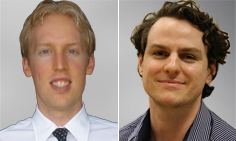AUTRALIA’S health care system has a number of significant issues to tackle and most require a fit-for-purpose medical workforce.
Key challenges include our ageing population, increasing prevalence of chronic diseases, workforce misdistribution and shortages, increases in health expenditure and global issues such as antibiotic resistance and climate change.
To address these challenges both now and into the future, medical students, junior doctors and registrars must be equipped with skills in addition to those traditionally taught at university, in hospitals and in clinics.
We need to be training doctors with leadership competencies to manage complex hospitals and health services, advocacy skills to campaign for public health in myopic political climates, research skills to contribute to the development of new knowledge and appraise the evidence for new treatments, and a comprehension of ethics and law to navigate emerging medical fields including genomics and personalised medicine.
It is normal for Australians today to have multiple careers over their lifetime.
Historically, medicine has been considered a métier which required lifelong commitment. However, while the number of doctors in the medical labour force has changed little, doctors are increasingly prioritising work˗life balance into their careers. Flexible working arrangements and hours of work are now considered important factors when medical graduates choose specialty training.
Current high rates of burnout and psychological distress experienced by doctors are other reasons why some consider exploring non-clinical career options.
But rather than being a brain drain from hospitals and health services, we believe that doctors who pursue alternative careers may contribute to an enhanced, diversified, satisfied and more productive medical workforce.
These doctors may work in research, education, administration, public health, law, journalism, business and politics, among other diverse fields. This increased non-clinical work has the potential to provide individual benefits, including enhanced job satisfaction resulting from greater flexibility and variety, and the development of a broader skill set, which may enhance employability.
In 2016, it is predicted that there will be a mismatch between supply of doctors and the number of training places, so pursuing alternative medical careers may be an opportunity to augment skills and training to improve prospects in lieu of a clinical training place.
Multiskilled practitioners within the health system may be more likely to contribute to it in innovative ways, and doctors who have more diverse experience can enhance links between research and clinical practice and contribute to service development, innovation and design.
Health services that provide flexibility through opportunities in both clinical and non-clinical work may be more likely to attract and retain a highly skilled workforce, reducing turnover of staff and increasing the quality of candidates for leadership and administrative positions.
However, there is the risk that time spent away from clinical work will reduce clinical acumen and technical skills. While some studies suggest that reduced clinical exposure time can compromise learning in procedural specialties, other programs have found no difference in training quality between those participating full-time and part-time.
Clearly, career diversification must be very carefully planned and timed, and clinical standards cannot be compromised.
For health services, the complexities of rostering and job-sharing will increase as the demand for flexible work arrangements increases. There are also additional costs associated with employing more part-time staff to provide the same volume of clinical services. These challenges have been an impediment to flexible working arrangements to date.
Medical training is a prolonged undertaking and is supported by substantial investment of public funds, so any decrease in the time medical professionals spend in clinical services raises questions about returns on this investment.
Yet, the community expects the medical workforce to be able to respond to forthcoming challenges in the 21st century. If the health system is to meet those expectations, training pathways and employment arrangements must evolve to meet the demands of the health workforce.
Dr Harris Eyre is a psychiatry registrar at The Townsville Hospital, a 2014˗2015 Fulbright Scholar and is undertaking a PhD in preventive psychiatry at the University of Adelaide. Dr Malcolm Forbes is a medical registrar at The Townsville Hospital, an NHMRC postgraduate scholar, and adjunct lecturer in the School of Medicine and Dentistry at James Cook University, Queensland.

 more_vert
more_vert
This article by my students makes me proud that students are driving future of health & medical education. Fully agree that traditional teaching althouhg successful in teaching science, still lacks touch with present day needs of the profession in particularly contemporary issues in Rural & Remote health, Leadership & Ethics. Another important issue in my experience as medical teacher for nearly 3 decades, is the gradual deterioration in basic science teaching. Medical schools need to take this debate more seriously. Thanks to Authors for raising this important debate.
After spending several years training in Anatomical Pathology, I diverted into General Practice in a rural area. Due to my skills, I was able to offer a valuable service to the Regional community, and the Department of the Attorney General, by conducting post mortem examinations in cases of sudden death from presumed natural causes, under the authorisation of the local Coroner. My forensic pathology practice “on the side” was helpful to local doctors while offering a unique experience to medical and allied health students undergoing rural training. It was an excellent arrangement and maintained my enthusiasm for General Practice as well.
What brought this all to an end was, strangely enough, the opening of the new regional hospital. The state health budget was too tight to afford an autopsy room in the new facilities, and the Department of the AG couldn’t do the unthinkable and pass some of the dollars I was saving them to another government department.
I’m all for career diversification and true generalisation in medical practice but it can so easily be undone by bureaucracy and money matters.